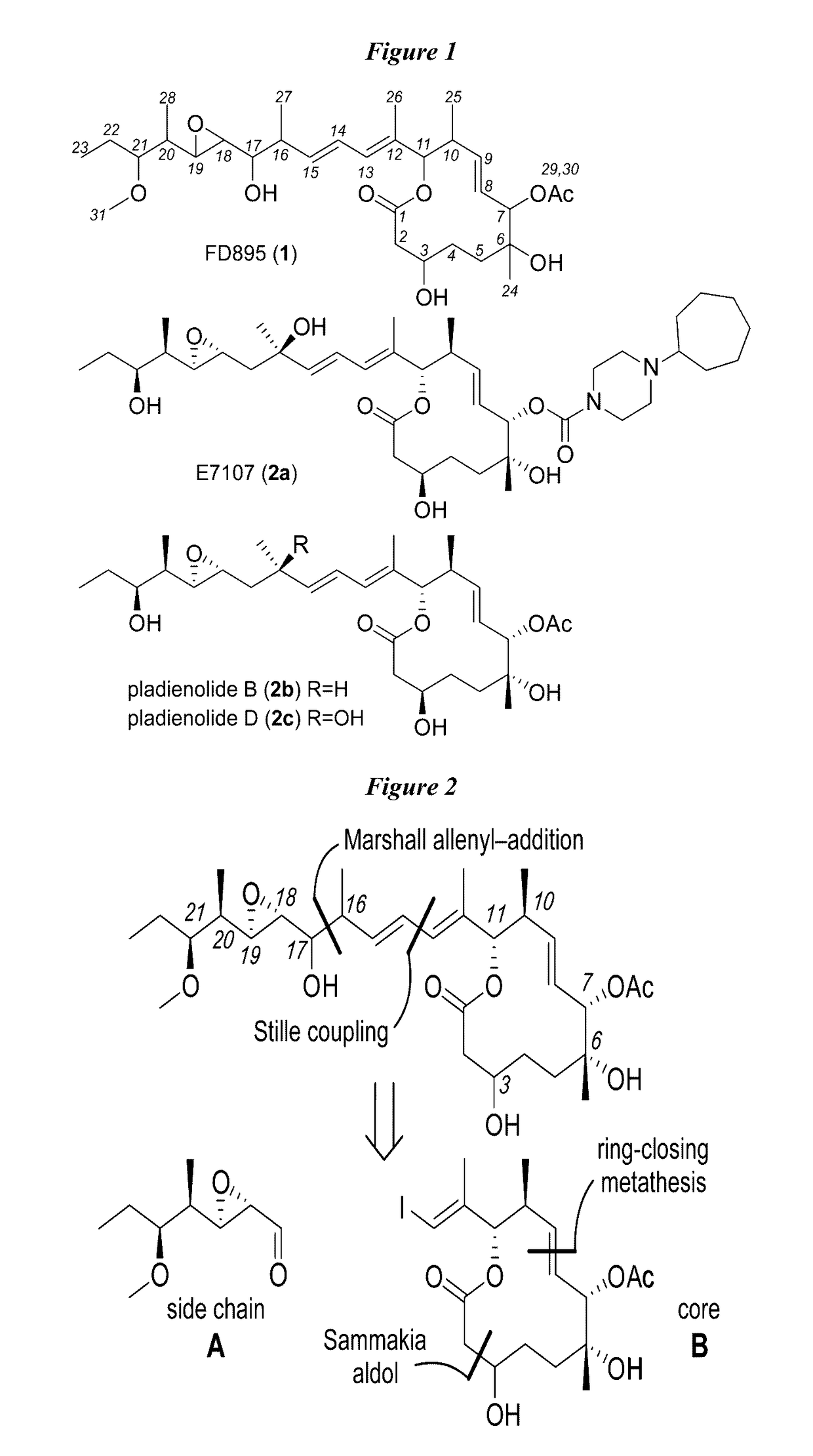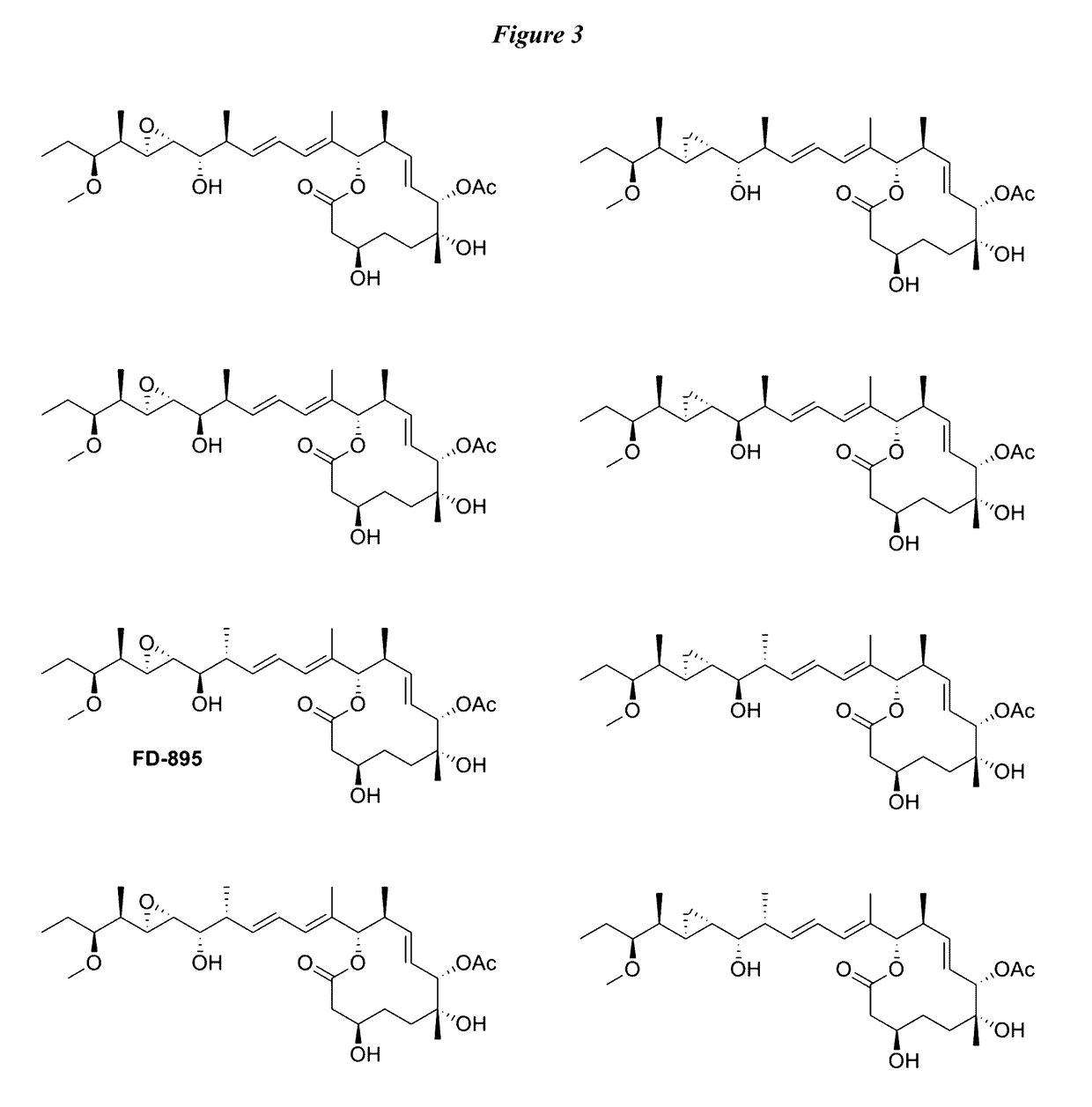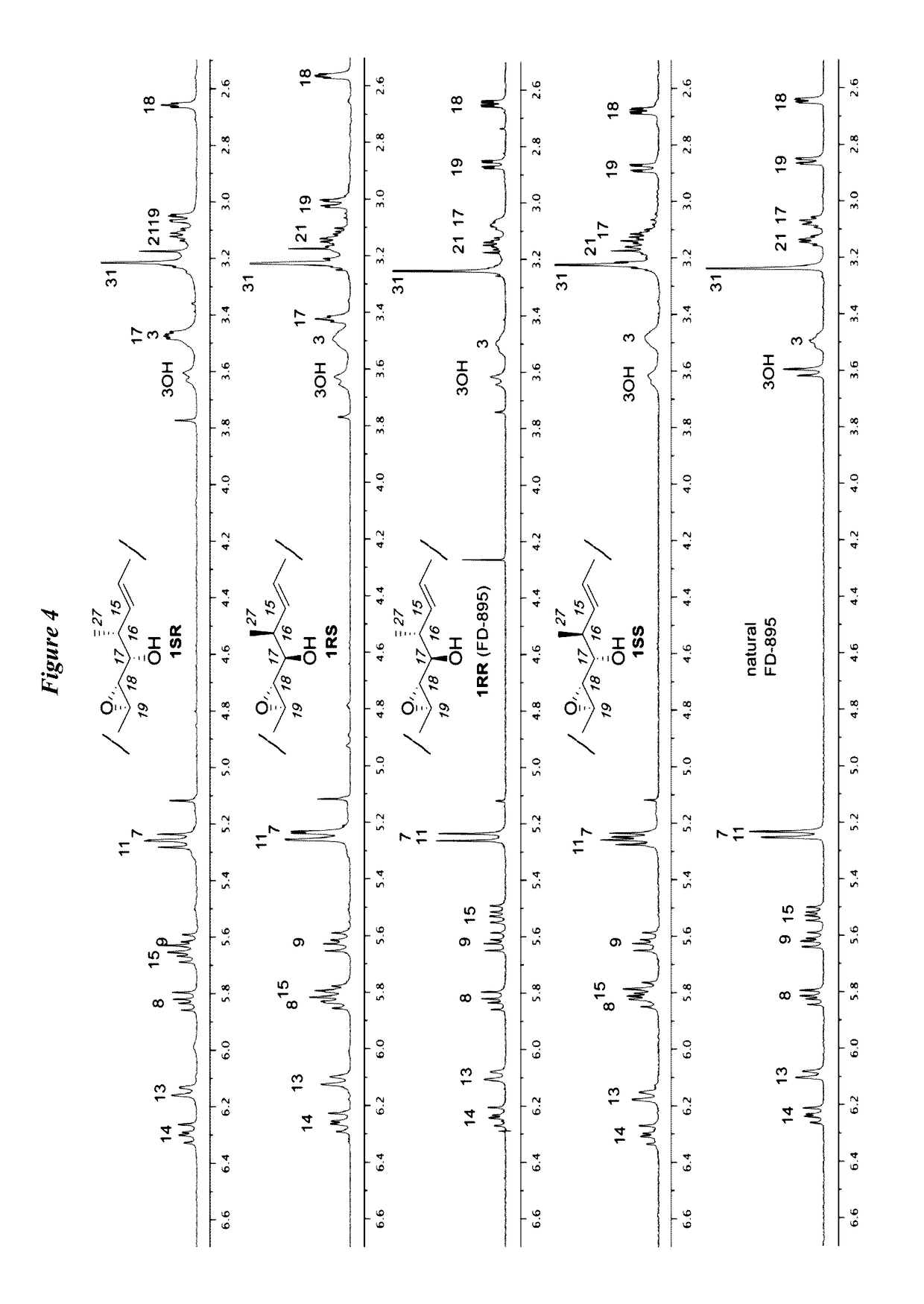Anti-cancer polyketide compounds
a technology of polyketide compounds and anticancer drugs, applied in the field of anticancer agents, can solve the problems of not being able to cure cll, worse diagnosis, and failing to respond to therapy,
- Summary
- Abstract
- Description
- Claims
- Application Information
AI Technical Summary
Benefits of technology
Problems solved by technology
Method used
Image
Examples
example 1
[0180]Synthesis of Component A, aldehyde 8.
[0181]
[0182]Synthesis of side component A, aldehyde 8 is shown in Scheme 1. (See FIG. 2). Briefly, application of a Crimmins auxiliary set the C20-C21 stereodiad by providing adduct 3 with ˜5:1 de, which was chromatographically purified to provide 3. Conversion of 3 to Weinreb's amide 4 allowed methylation provided amide 5. Reduction of 5 with DIBAL-H, followed by a Homer-Wadsworth-Emmons (HWE) olefination, provided ester 6. The HWE reaction was completed immediately after isolation of the aldehyde. Exhaustive reduction of 6 with DIBAL-H provided intermediate alcohol 7. Aldehyde 8 was synthesized through installation of the C18-C19 epoxide by a Sharpless oxidation, following IBX oxidation.
example 2
[0183]Synthesis of Component B, macrolide 21
[0184]
[0185]Synthesis of component B, macrolide 21 is shown in Scheme 2. (See FIG. 2). Brown chelation-controlled addition of the MEM ether 10 to aldehyde 9 provided the C7 stereocenter in 11. Oxidation of 11 to ketone 12, followed by a chelate-controlled addition of MeMgBr, afforded adduct 13. Treatment of MEM ether with p-anisaldehyde dimethylacetal and ZnBr2 both converted the MEM ether to PMP acetal and deprotected the TBS ether in one operation, affording carbinol 14.
[0186]Oxidation of 14 to aldehyde 15 using Dess-Martin periodinane, followed by condensation with the Sammakia auxiliary 16, provided acid 17 after hydrolytic workup. Acid 17 was coupled to alcohol 18 to afford ester 19. Removal of the PMP acetal enabled the preparation of lactone 20 by means of an RCM reaction using Hoveyda-Grubbs 2nd generation catalyst. Macrolide 21 was obtained by acylation of the secondary carbinol at C7 and TBS deprotection at C3.
example 3
[0187]Preparation of cis-isomers 1RS and 1SR.
[0188]
[0189]Synthesis of cis- and trans-isomers 1SS, 1RS, 1RR, and 1SR is shown in Scheme 3. (See FIG. 2). Addition of terminal alkynes 23a or 23b to aldehyde 8 in the presence of BF3.Et2O led to the formation of 24b or 24d, respectively. Alkynes 24b and 24d were then hydrostannylated to their corresponding vinylstannanes and coupled to core fragment 21 under modified Stille conditions to afford the cis-isomers 1RS and 1SR from 24b and 24d, respectively. NMR studies on both materials indicated that neither matched the natural 1RR (FD-895) analogue (FIG. 3).
PUM
| Property | Measurement | Unit |
|---|---|---|
| pH | aaaaa | aaaaa |
| time | aaaaa | aaaaa |
| pharmaceutical composition | aaaaa | aaaaa |
Abstract
Description
Claims
Application Information
 Login to View More
Login to View More - R&D
- Intellectual Property
- Life Sciences
- Materials
- Tech Scout
- Unparalleled Data Quality
- Higher Quality Content
- 60% Fewer Hallucinations
Browse by: Latest US Patents, China's latest patents, Technical Efficacy Thesaurus, Application Domain, Technology Topic, Popular Technical Reports.
© 2025 PatSnap. All rights reserved.Legal|Privacy policy|Modern Slavery Act Transparency Statement|Sitemap|About US| Contact US: help@patsnap.com



